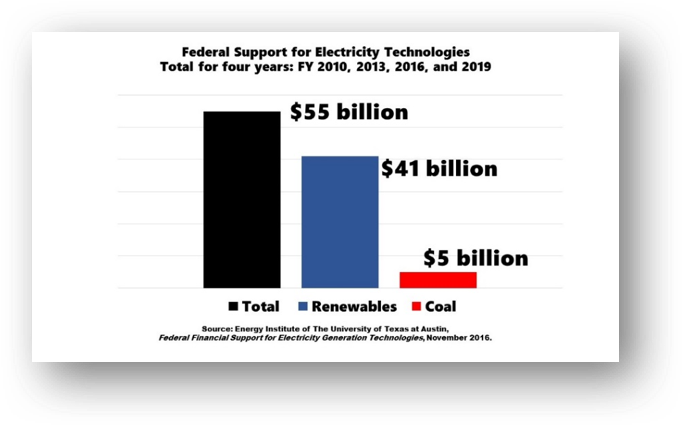Recently, Texas Congressman Lamar Smith, chairman of the Science Committee in the U.S. House of Representatives, wrote a Real Clear Energy opinion piece pointing out how the federal government has used tax dollars to pick winners and losers in the energy field.
For instance, Chairman Smith points out that, during the past decade, renewable electricity sources have been subsidized heavily by the federal government. However, there hasn’t been much return for that enormous federal investment. In fact, solar and wind accounted for only 7% of the nation’s electricity last year compared to two-thirds from coal, natural gas, and oil. Renewables also get another boost. Currently, 29 states have renewable portfolio standards. These standards require that renewables be used to produce electricity. The amount of electricity required from renewables in these states varies from 10% in Wisconsin to 100% in Hawaii.
A report by the Energy Institute of the University of Texas at Austin provides more evidence of biased energy policy. The report shows that for four years (FY 2010, 2013, 2016, and 2019) federal support for all electricity technologies totaled $55 billion, with renewables receiving 75 percent of the total, compared to less than 10 percent for coal. (Other sources received the balance of the federal support.) These subsidies show a federal playing field titled heavily and unfairly in favor of renewables.
Electricity grid operators have to figure out the cheapest and most reliable mix of electricity sources for consumers. The massive subsidies given to renewables make them cheap, but renewables are not reliable: the sun doesn’t always shine and the wind doesn’t always blow. As our recent comments at a FERC technical conference point out, the rules that guide wholesale electricity markets undervalue the 24/7 reliability and resilience attributes of baseload electricity sources, especially coal. We’re not opposed to renewables, but if policymakers are truly committed to maintaining a healthy electricity grid, all energy sources — coal, gas, nuclear, and renewables — must compete on a level playing field.